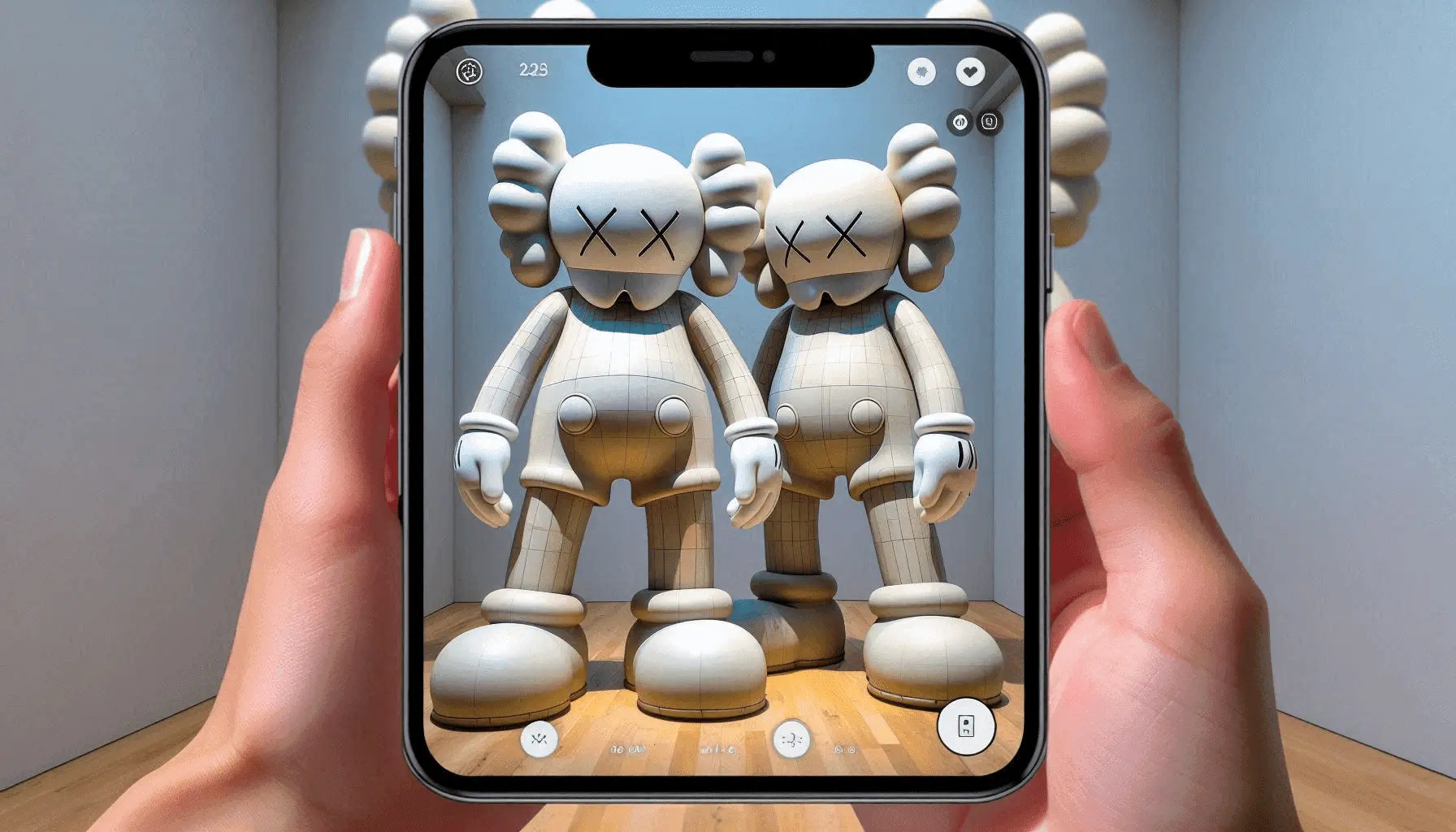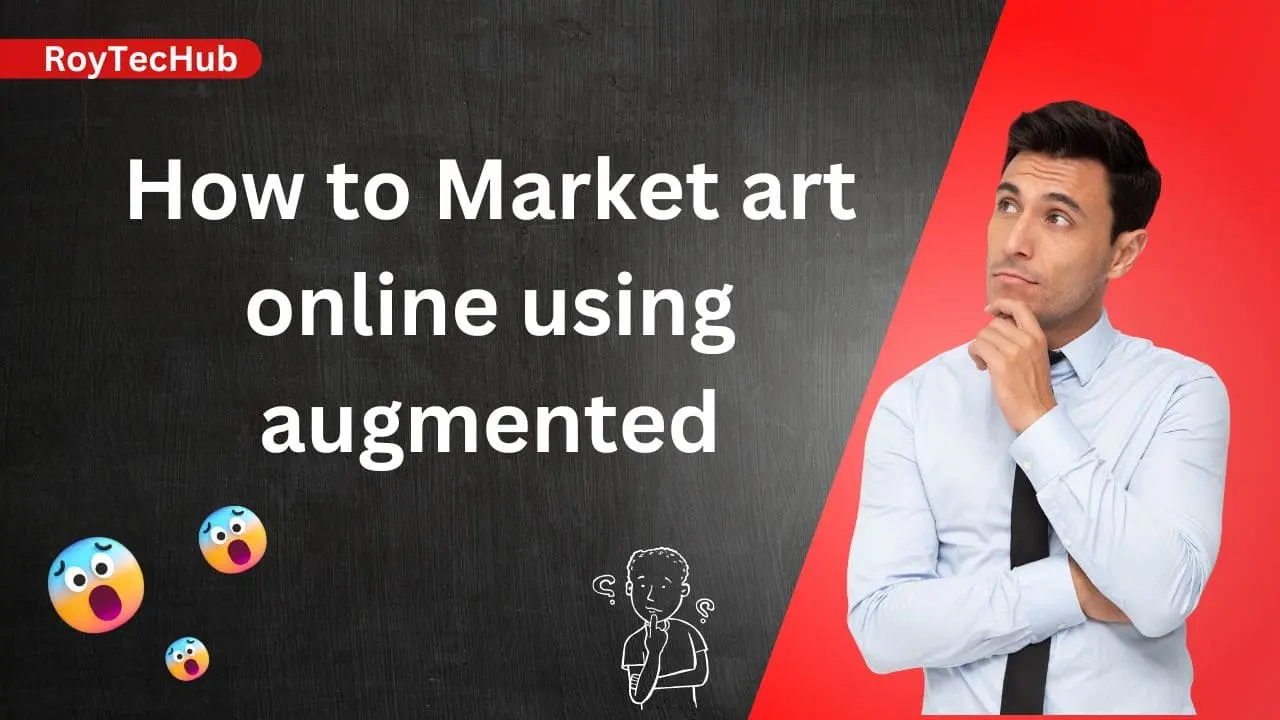The idea of marketing art online has become prominent due to the evolvement in the new generation digital world and thus, Augmented Reality or simply AR is a unique and strong tool for artists and galleries interested in marketing art online.
Table of Contents
ToggleIncorporating AR in your marketing communications, you can provide the potential buyer with rich exposure to an object as if he or she actually touches it or is surrounded by it.
This blog post will examine how to sell art on the internet with the help of AR, and all the steps and examples will be described in detail.
Marketing art online using AR With the help of augmented reality the art business has received new opportunities and tools for orienting potential buyers.
Due to the technique it uses of placing virtual objects on reality, one can place the pieces in their own environment and have a better feel of the artwork and moreover, engage with art in a different way.
Steps: How to Market Art Online Using Augmented Reality
Step 1: Choose the Right AR Platform
Choosing the correct AR platform for your application is important for the effectiveness of marketing your AR art.
Consider the following factors when choosing a platform:
- Compatibility: Make certain that the platform represents the gadgets that the viewers use the most (i. e. ios, android and others).
- Ease of Use: For this reason, the 4Ps of the marketing mix should incorporate a platform that is easy for both you and your potential buyers to use.
- Features: The chosen interface features should enrich the experience of using augmented reality; the ability to efficiently incorporate AR content into your website.
Popular AR platforms for art marketing:
- Artivive: An easily navigable website tailored for artists and galleries along with new possibilities.
- Arloopa: They provide solutions such as image recognition and placement of 3D models.
- Sketchfab: Facilities the development and sharing of 3D models that can be integrated into AR contents.
Step 2: Create High-Quality Digital Versions of Your Art
- AR depends on very clear versions of the artwork that you wish to place in the real world hence it is important to develop high quality digital versions of the pieces that you want to use in your artwork. This may involve:
- Scanning: For this, scan your artwork using a high-resolution scanner to be able to capture the fine elements of sculpture.
- Photography: Use a digital camera to capture the samples because several elements such as color and resolution must be represented as accurately as possible.
- 3D Modeling: For sculptures and all kinds of sculptures and other things in 3D, you should make very qualified and accurate models in the Computer programs like Blender or Autodesk Maya.
Step 3: Develop AR Experiences
However, having high-quality digital images of your paintings is not enough; the next thing is to create augmented reality which people with potential of buying your artwork can touch.
Here’s how to go about it:
- AR App Integration: Promote your digital artwork through AR applications oft he platforms Artivive or Arloopa by integrating your work into their apps. These platforms usually give or offer tutorials on how one can execute their tasks in the first place.
- Interactive Elements: Or you can link additional layers of information to your augmentation like tooltips or descriptions for a simple tap, voice-overs which read out for you or animating features. This can enrich the experience of the viewer along with offering more straight regarding your artwork.
- Testing: It is advisable to ensure proper testing of the AR experience before launching it; this will enable you to test it on all devices with proper display of the experience.
Step 4: Integrate AR into Your Website
To enhance the use of your AR-promoted art, incorporate such experiences to your website for better promotion.
Here are some steps to follow:
- AR Preview Feature: Enhance your artwork by providing a AR preview on the specific pages, this helps the visitors to see how the artwork will appear in their house via smartphone or tablet.
- Detailed Instructions: It is necessary to give clear instructions on how to use the AR feature of the application. Ensure that there is a tutorial video or at least a guide that the users can follow when they are using the website.
- Call-to-Action: Make sure you entice the visitors to explore the AR feature by having the obvious buttons such as “View in AR” or “Try in Your Space”.
You may also read: What’s the difference between Augmented reality, Virtual reality and Mixed reality
Step 5: Promote Your AR-Enhanced Art
Advertising plays a central role when it comes to encouraging people to visit AR artworks.
Utilize various marketing channels to spread the word:
- Blog Posts: The key for the success of the new AR features will lie in the proper promotion; therefore, it is crucial to create blog posts to be posted on the website and present the spectators with an overview of the features and their advantages to the potential buyers.
- Press Releases: Make press releases for the media houses that deal in art and technology to get coverage and increase the user base.
- Influencer Partnerships: Seek relationships with those art personalities that would be willing to critique and share your AR-artwork with their followers.
Step 6: Leverage Social Media
Social media is a powerful tool for promoting your AR-enhanced art.
Here’s how to leverage it effectively:
- AR Demos: Post the AR experiences on different social media pages including Instagram, Facebook, TikTok. To popularize it go to the search tab and choose relevant hashtags and some interesting captions.
- User-Generated Content: Promote such opportunities urging the customers to record their own AR experience with the artwork in question on social media. Come up with a new hashtag for your campaign and show your fans’ and followers’ posts on your profiles.
- Interactive Stories: Leverage on the use of Instagram and Facebook stories to engage your audience presenting your augmented reality features. A poll, quiz, or swipe up link will help to increase engagement, traffic to your website if shared properly.
Step 7: Utilize Email Marketing
Email marketing can help you reach your existing audience and keep them informed about your AR-enhanced art:
- Newsletters: Besides, make it a rule to include information about your AR features in the regular newsletters that are sent to clients. Try to focus new AR experiences and publish its links to your site directly.
- Exclusive Previews: Send exclusive sneak peeks of new releases of artworks with an AR component to the subscribers. This could make you feel excited and nervous at the same time, because of the increased rate at which activities are being executed.
- Follow-Up Campaigns: Make follow-ups that include AR features to the customers who have engaged with them and offer them more information on the products as well as urge them to make a purchase.
Step 8: Analyze results & Optimization
To ensure the success of your AR marketing efforts, regularly analyze performance data and optimize your strategy:
- Analytics Tools: There is a need also to monitor how the users of your application are engaging with the AR functions through analysis tools. Examples of the metrics that would have to be tracked include engagement rates, time spent on creating new AR experiences as well as on the experiences themselves, and conversion rates.
- Customer Feedback: AAR with the customers regarding their AR experiences.
- Continuous Improvement: Therefore, make the necessary changes concerning your AR features and your marketing strategies depending on the data and feedback you have received. Endeavor to explore methods of making it increasingly useful to the users and producing even better outcomes.
4. Examples of AR in Art Marketing
Case Study : KAWS and Acute Art

The famous sculpture artist KAWS joined with Acute Art to make augmented reality versions of some of his recognized sculptures. However, with the help of Acute Art application users are able to position these sculptures in the context of the real environment, it gives a new twist to the works of KAWS.
Example
The recent AR application placed around KAWS’s sculpture called the “Companion” can be viewed through the Acute Art app. It enables the users to interface the masterpiece in their living room or garden thereby afford them the chances to view the sculpture’s size and detailed aspects virtually like they are physically real.
5. Conclusion
Marketing art online by the use of augmented reality is one of the most popular ways that help to reveal the mastery of an artist and attract new customers.
According to the information provided in this blog post, it is possible to create notable AR experiences that actively contribute to appealing to viewers’ attention, boosting the confidence of the customers in the products being advertised, and promoting sales.
AR is for now a developing field and consecutively the possibilities for artists and galleries to give a unique selling proposition are countless.
With the help of the proposed information and constantly practicing various new features of AR, you will always be relevant in terms of marketing your art.
Again, in marketing AR art, it is crucial to create an effective message, which is consisting of appropriate value proposition, brand communication and by emphasizing on the four pillars of AR art, namely engagement, quality, attractiveness and relevance.
If applied with the help of certain techniques, AR allows making art different and more innovative in terms of presentation and selling online.

This blog post was exactly what I needed. Your clear and concise explanations made the subject much easier to understand. Thank you for taking the time to put this together. I’m looking forward to reading more from you!
This was a very informative read. Thank you for the valuable insights.